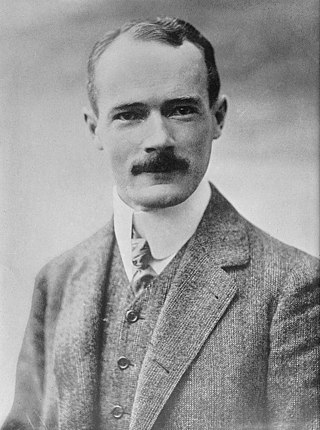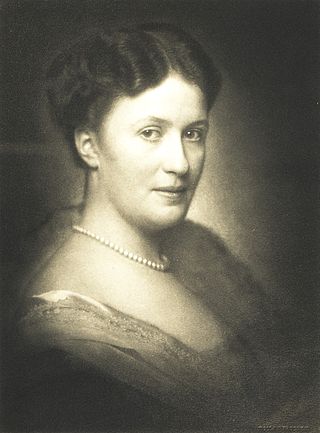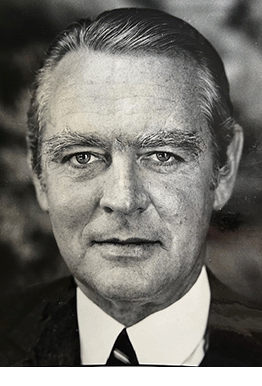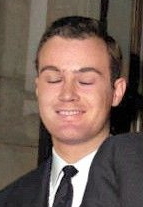
Friedrich Krupp AG Hoesch-Krupp, trading as Krupp, was the largest company in Europe at the beginning of the 20th century as well as Germany's premier weapons manufacturer during both world wars. From the Thirty Years' War to the end of World War II, it produced battleships, U-boats, tanks, howitzers, guns, utilities, and hundreds of other commodities. The company also produced steel used to build railroads in the United States and to cap the Chrysler Building.

Gustav Georg Friedrich Maria Krupp von Bohlen und Halbach was a German foreign service official who became chairman of the board of Friedrich Krupp AG, a heavy industry conglomerate, after his marriage to Bertha Krupp, who had inherited the company. He and his son Alfried would lead the company through two world wars, producing almost everything for the German war machine from U-boats, battleships, howitzers, trains, railway guns, machine guns, cars, tanks, and much more. Krupp produced the Tiger I tank, Big Bertha and the Paris Gun, among other inventions, under Gustav. Following World War II, plans to prosecute him as a war criminal at the 1945 Nuremberg Trials were dropped because by then he was bedridden, senile, and considered medically unfit for trial. The charges against him were held in abeyance in case he were found fit for trial.

The United States of America vs. Alfried Krupp, et al., commonly known as the Krupp trial, was the tenth of twelve trials for war crimes that U.S. authorities held in their occupation zone at Nuremberg, Germany, after the end of World War II. It concerned the forced labor enterprises of the Krupp Group and other crimes committed by the company.

Charles "Chip" Eustis Bohlen was an American diplomat, ambassador, and expert on the Soviet Union. He helped shape United States foreign policy during World War II and the Cold War and helped develop the Marshall Plan to rebuild Europe.

Alfried Felix Alwyn Krupp von Bohlen und Halbach, often referred to as Alfried Krupp, was a German industrialist, a competitor in Olympic yacht races, contributor to the SS and a member of the Krupp family, which has been prominent in German industry since the early 19th century. He was convicted after World War II of crimes against humanity for the genocidal manner in which he operated his factories and sentenced to twelve years in prison, subsequently commuted to three years with time served in 1951.

Bertha Krupp von Bohlen und Halbach was a member of the Krupp family, Germany's leading industrial dynasty of the 19th and 20th centuries. As the elder child and heir of Friedrich Alfred Krupp she was the sole proprietor of the Krupp industrial empire from 1902 to 1943, although her husband, Gustav Krupp von Bohlen und Halbach, ran the company in her name. In 1943 ownership of the company was transferred to her son Alfried.
Bohlen is a surname shared by several notable people, among them being:
Halbach is a surname. Notable people with the surname include:

Hans Howaldt was a successful and highly decorated German U-boat commander in the Kaiserliche Marine during World War I and also active in World War II. By the end of World War I he was promoted Kapitänleutnant.
The Lex Krupp was a document signed into law on 12 November 1943 by Adolf Hitler that converted Friedrich Krupp AG into a partnership with specially regulated rules of succession in order to ensure that the Krupp family enterprise remain intact.

The Alfried Krupp von Bohlen und Halbach Foundation is a major German philanthropic foundation, created by and named in honor of Alfried Krupp von Bohlen und Halbach, former owner and head of the Krupp company and a convicted war criminal.

Kathrin Bringmann is a German number theorist in the University of Cologne, Germany, who has made fundamental contributions to the theory of mock theta functions.
Katja Windt is a researcher and professor of global production logistics who served as president of Jacobs University Bremen from 2014 until 2018.

Berthold Beitz was a German industrialist. He was the head of the Krupp steel conglomerate beginning in the 1950s. He was credited with helping to lead the re-industrialization of the Ruhr Valley and rebuilding Germany into an industrial power.

The Alfried Krupp Institute for Advanced Study in Greifswald is an institute for advanced study named after Alfried Krupp von Bohlen und Halbach. On 20 June 2000, this institute was founded by the Alfried Krupp von Bohlen und Halbach Foundation, the German Land of Mecklenburg-Vorpommern and the University of Greifswald. These three founders co-established and contributed to the Stiftung Alfried Krupp Kolleg Greifswald, which was entrusted with the task of establishing this Wissenschaftskolleg. The Krupp Foundation contributed the plot of land and the building on it, valued at €15.3m, while Mecklenburg-Vorpommern and the University of Greifswald contributed the operational funding that initially amounted to €4.1m.

Ursula Gather is a German statistician and academic administrator. From 2008 to 2020, she was rector of TU Dortmund University. Since 2013, Gather has been chairwoman of the Alfried Krupp von Bohlen und Halbach Foundation.

Monika Aidelsburger is a German quantum physicist, Professor and Group Leader at the Ludwig Maximilian University of Munich. Her research considers quantum simulation and ultra cold atomic gases trapped in optical lattices. In 2021, she was awarded both the Alfried-Krupp-Förderpreis and Klung Wilhelmy Science Award.

The Krupp steelworks, or Krupp foundry, or Krupp cast steel factory in Essen is a historic industrial site of the Ruhr area of North Rhine-Westphalia in western Germany that was known as the "weapons forge of the German Reich".

Schloss Blühnbach is a stately home in the Blühnbach valley in Werfen, Salzburg (state), Austria. Formerly, it was a hunting lodge of the Prince-Archbishops of Salzburg and Archduke Franz Ferdinand of Austria, heir to the Austro-Hungarian throne, whose assassination in Sarajevo triggered World War I. The estate is privately owned and ‘hermetically closed’ to the public.
The Krupp family is a prominent 400-year-old German dynasty from Essen, noted for its production of steel, artillery, ammunition and other armaments.















